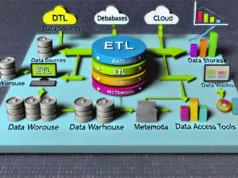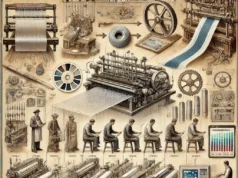2D games attract with their simplicity, yet amaze with beauty and originality. The art of these games is not just decoration: it sets the tone, atmosphere, and underscores the individuality of each project.
What is 2D game art?
2D art for games relies on the creation of visual elements in two dimensions: height and width. This style is characterized by the lack of depth, which makes it less complex and time-consuming compared to 3D modeling.
Characters, objects, and environments in such games are designed to work within these two dimensions, offering players clear and easily understandable graphics. 2d art outsourcing studios are often involved in the development of such games to tackle the complexity of the process and ensure a good result.
The key components of 2D game art include characters, backgrounds, and interface elements. Each of these elements is created with consideration for its visual appeal and functionality in the game. This approach allows players to focus on the gameplay rather than the complexity of the graphics.
Games like “The Super Mario” or “Badland” demonstrate the skill and appeal of 2D art, confirming its popularity and demand. It is important to note that the simplicity of 2D games does not limit their depth or engagement. On the contrary, it often makes understanding gameplay mechanics and controls easier, making these games accessible to a wide audience.
2D art can be started in the form of concept art, which is then transformed into full-fledged game assets. This flexibility in design and development makes 2D an ideal choice for many game developers, especially in the indie space.
Styles of art
To create impressive 2D art for games, it is helpful to explore the various styles used by game artists.
Pixel Art
Pixel art is a classic style where each square pixel serves as a building block for creating characters and worlds. This style, reminiscent of early video games, remains popular due to its simplicity and unique charm. Examples of such games include Minecraft and Stardew Valley, demonstrating how pixels can be used to create entire universes.
Vector Graphics
Vector graphics eschew pixels in favor of lines and shapes defined mathematically. This allows images to maintain quality at any scale, making them ideal for scalable projects. Benefits include smaller file sizes and ease of editing, but creating complex textures may be more labor-intensive.
Hand-Drawn Graphics
Hand-drawn graphics bring a sense of uniqueness and exclusivity to games. Artists create each element by hand, from characters to backgrounds, allowing for a special depth and emotionality.
Cartoon Style
The cartoon style adds playfulness and lightness, using bright colors, exaggerated forms, and fun scenarios. This style makes games appealing to a wide audience, adding humor and variety. “Mummy Frog” by inkration is an example of a game where cartoon graphics create a unique and fairytale atmosphere.
Realistic Style
The realistic style blurs the lines between 2D and 3D, offering high detail and accuracy. While this requires significant effort and skill, the results can be stunning, creating deep and immersive worlds.
Tips for choosing a game art style
Choosing a game art style is a key moment in 2D game development. Here are some tips on how to make the right choice.
Analysis of the target audience and game genre. Understanding who will play your game and its genre will help you choose a suitable artistic style. Children’s games often use bright, cartoonish styles, while more complex and realistic visual solutions are suitable for adult audiences.
Importance of uniqueness and memorable design. Unique and memorable design sets your game apart from competitors. Find your unique visual language that stands out and attracts attention.
Matching the art style to the overall atmosphere and story of the game. The artistic style should harmonize with the plot and atmosphere. This will help players immerse themselves better in the game world and feel its mood.
Technical limitations and project budget. Be realistic: high-quality graphics require time and resources. Indie developers need to focus on an achievable level of quality that won’t hinder production due to budget constraints. Often, simplicity and creativity can compensate for a lack of resources.
Remember that it is important to strike a balance between graphic quality and gameplay. The graphic style should support and enhance the gaming experience, not distract from it. Define the basics of gameplay, test the prototype, and, based on the data obtained, choose the appropriate artistic style.
The process of creating 2D Art
The process of creating 2D art for games requires time, patience, and suitable tools. Here’s what it typically looks like.
- Choosing the right software: Complex design requires specific tools like Adobe Photoshop for raster images or Adobe Illustrator for vector graphics.
- Creating concept art for characters, backgrounds, interface, and other key elements of the game. This will help define the overall style and design direction.
- Development of models and sprites: Tools other than the main graphics editor may be required.
- Designing backgrounds and interfaces that match the overall aesthetics and story of the game. They should harmonize with characters and other game objects.
- Animation of characters and other key elements to add dynamism and life to the game. Specialized programs such as Adobe After Effects or specific tools for 2D animation may be required for animation.
- Integration into the game using the selected game engine, such as Unity or Unreal Engine, adapting and optimizing it as necessary.
- Testing and iterations to ensure that the art fits well into the game and does not cause technical problems. Be prepared for possible iterations to refine the design.
As you can see, creating 2D game graphics is an artistic and creative endeavor. By using the right tools and methods, you can create stunning works of art that bring the game to life.
A deep understanding of modern styles and game design lays the foundation for future projects. But it is important to note that due to the complexity of the development process, good results can only be achieved with an experienced partner specializing in 2D game art.


















